
Understanding the Types of Hydraulic Hoses for Optimal Selection
Hydraulic hoses are an essential component in a wide range of machinery and equipment, playing a crucial role in transferring hydraulic fluids and power. They are like the veins and arteries of the hydraulic system, ensuring the smooth flow of fluids and enabling precise control over various functions. Understanding the different types of hydraulic hoses available is the first step in selecting the right hydraulic hose for your application.
Quick Links
What are the different types of hydraulic hoses?
There are many different types of hydraulic hoses, each characterized by its own construction, materials, technical specifications and specific applications. Discover the most important types listed below.
1. Braided Hoses
Braided hydraulic hoses are among the most common and versatile hydraulic hose types. They consist of a flexible inner tube that carries the hydraulic fluid and an outer layer of braided wire or textile, which provides reinforcement and protection. Braided hoses are known for their excellent flexibility, durability, and resistance to abrasion. They are widely used in applications where flexibility and strength are essential, such as in construction equipment, mining machinery, and industrial machinery.
2. Spiral Hoses
Spiral hydraulic hoses are designed with a spiral layer of wire reinforcement. This construction offers superior strength and resistance to high pressure, making them suitable for heavy-duty applications. Spiral hoses are commonly used in applications like oil drilling equipment, heavy construction machinery, and hydraulics systems that operate at high pressures.
3. Thermoplastic Hoses
Thermoplastic hydraulic hoses are made from synthetic materials such as polyamide, polyester and polyurethane, ensuring strong resistance to chemicals and protection against UV radiation. Known for their lightweight and flexibility, these hoses prove versatile across a wide array of applications. You’ll often find them used in medium-to-high pressure hydraulic systems, handling compressed air and gases, transporting chemicals, and in tasks like water-cleaning and paint-spray operations. One of the significant advantages of thermoplastic hoses is their ability to maintain low expansion even under maximum working pressure.
4. Transfer Hoses
Transfer hoses are designed specifically for transferring hydraulic fluids between various components of a hydraulic system, ensuring the smooth operation of the entire system. Their inner tube is typically made of synthetic rubber, often Nitrile or Polychloroprene, with braided reinforcement and an oil and abrasion resistant cover. Transfer hoses are recommended for applications such as hydraulic oil lines, heavy-duty transmission oil cooler lines and glycol antifreeze solutions.
5. Return Line Hoses
Return line hoses are another category of hydraulic hoses. They are used to carry hydraulic fluids back to the reservoir after they have been used in an actuator or component. Return hydraulic hoses are designed for low-pressure fluid transfer and handling media such as oils, petroleum, glycol antifreeze and water-based hydraulic fluids.
6. Lock-on Hoses
Lock-on hoses, also known as push-on hoses, are designed for easy and quick assembly without the need for clamps or special tools. They are typically used in low-pressure applications to convey petroleum-based hydraulic oils, water, glycol-based antifreeze solutions, engine lubricating oils and air. Lock-on hoses are found in low-pressure hydraulic and pneumatic systems such as shop air and automotive assembly.
7. Fleet Hoses
Fleet hoses are made specifically for trucks, buses, trailers, mobile air brake systems and heavy-duty equipment. Their specialization lies in their ability to handle critical tasks such as managing air brake systems, distributing fuel, facilitating the flow of grease and oil, ensuring responsive power steering, and regulating the transmission fluid. Each of these functions is pivotal in ensuring the dependable and secure operation of the hydraulic systems that power these vehicles and equipment.
8. Specialty Hoses
Among the various types of hydraulic hoses, specialty hoses are custom-designed to meet the distinct or unusual needs in specific industries or applications, like hydraulic jacking systems, hot oil transfer, low-pressure powder fire suppressant applications, and more. These hoses may include features such as high-temperature resistance, extreme flexibility, or resistance to certain chemicals.
9. Industrial Hoses
Industrial hoses are commonly used in manufacturing, mining, agriculture, and many other industrial applications. They are designed to handle a variety of media, including air, water, chemicals, and hydraulic fluids. Industrial hoses are typically made of rubber, PVC, polyurethane, or other materials that are resistant to abrasion, corrosion, and other types of wear and tear.
10. PTFE Hoses
PTFE (polytetrafluoroethylene) hydraulic hoses offer outstanding chemical resistance to a variety of corrosive substances and can handle wide temperature ranges. Flexible and shock-resistant, they are unaffected by repeated bending, vibration or impulse, and can withstand alternating hot and cold cycles. PTFE hoses deliver high flow rates thanks to their low coefficient of friction with anti-adhesive properties ensuring low pressure drops during service. Non-contaminating, PTFE hoses are ideal for food handling and pharmaceutical applications.
11. Suction Hydraulic Hoses
Suction hydraulic hoses are designed for applications where the hydraulic fluid needs to be drawn from a reservoir or tank. They are built to handle the vacuum created during the suction process and are commonly used in applications like water pumps, vacuum trucks, and other suction-related tasks.
Factors to Consider When Selecting a Hydraulic Hose
When selecting the right hydraulic hose for your specific application, it’s crucial to consider several important factors:
- Pressure Rating: The hydraulic hose you choose should have a pressure rating that exceeds the maximum working pressure of your hydraulic system. It’s essential to consider both the maximum and minimum operating pressures.
- Temperature Range: Different hydraulic hoses have varying temperature tolerances. Ensure the hose can withstand the temperature extremes of your application.
- Fluid Compatibility: Make sure the hydraulic hose is compatible with the hydraulic fluid it will be conveying. Incompatible materials can lead to deterioration or failure of the hose.
- Flexibility and Bend Radius: Consider the level of flexibility needed for your application and the hose’s bend radius, which affects its ability to navigate tight spaces.
- Reinforcement Type: Depending on your application’s demands, decide whether you need braided, spiral, or other reinforcement types for the hose.
- Environmental Conditions: Take into account environmental conditions, such as exposure to sunlight, chemicals, or abrasion, and select a hose that can withstand these factors.
- End Fittings: Ensure the hose’s end fittings match the connections of your hydraulic system. Proper sealing and attachment are crucial for safety and performance.
- Safety Standards: Comply with industry safety standards and regulations when selecting a hydraulic hose, as safety is of paramount importance.
- Cost: While cost is a factor, it should not be the sole determinant. Choosing a high-quality hydraulic hose that meets your specific needs is a wise investment to prevent system failures and downtime.
Learn more about hydraulic hose selection factors in our article: 7 Key Hydraulic Hose Selection Factors.
In Conclusion
Hydraulic hoses are a vital component of hydraulic systems, serving as the conduits that allow the transfer of hydraulic fluids and power. Choosing the right hydraulic hose assembly is critical to ensuring the safety, efficiency, and reliability of your hydraulic equipment. With various types of hydraulic hoses available to cater to specific applications and a range of factors to consider, it’s essential to carefully evaluate your needs and select the most suitable hydraulic hose for your hydraulic system. By making informed choices, you can enhance the performance and longevity of your hydraulic machinery, thereby minimizing downtime and maintenance costs.
Marshall supplies a wide selection of hydraulic hoses to various industries in Ontario, Quebec and the Maritimes. We carry a vast inventory and can help you find the right hydraulic, pneumatic or industrial hose and fitting for your application. Contact our experts for assistance with hose selection and information on our other products.

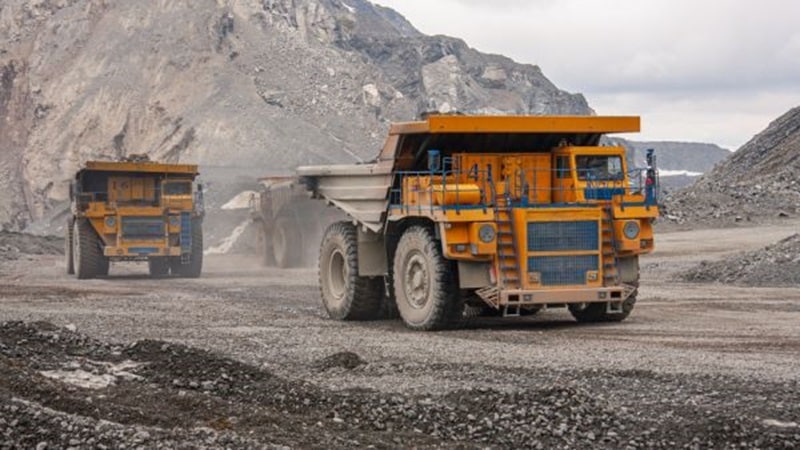
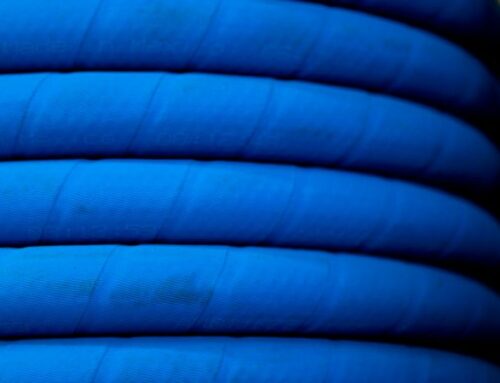
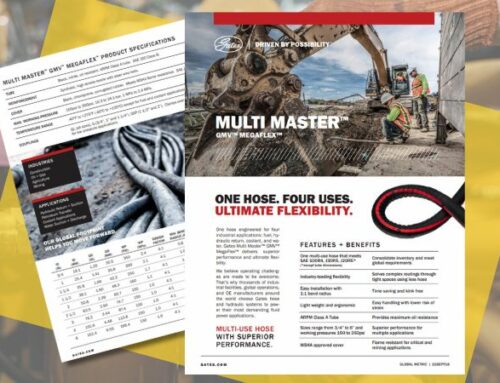
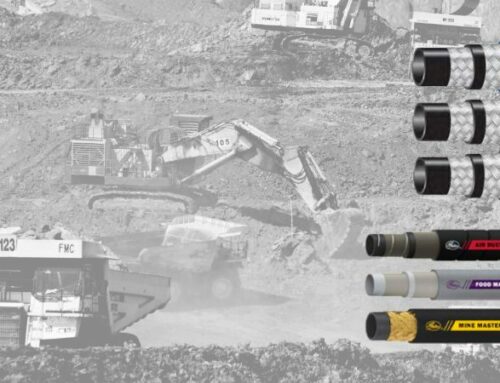
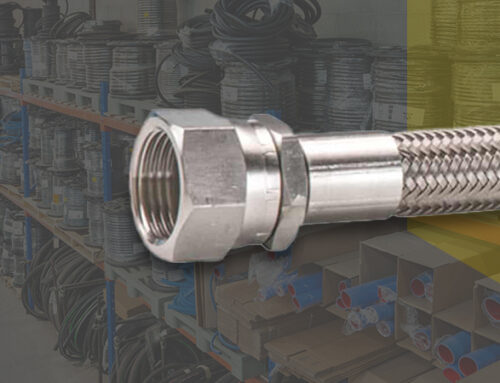
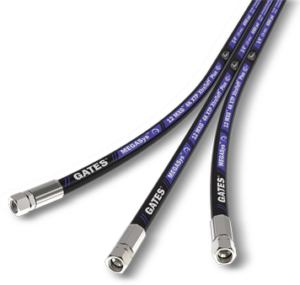
Follow Us